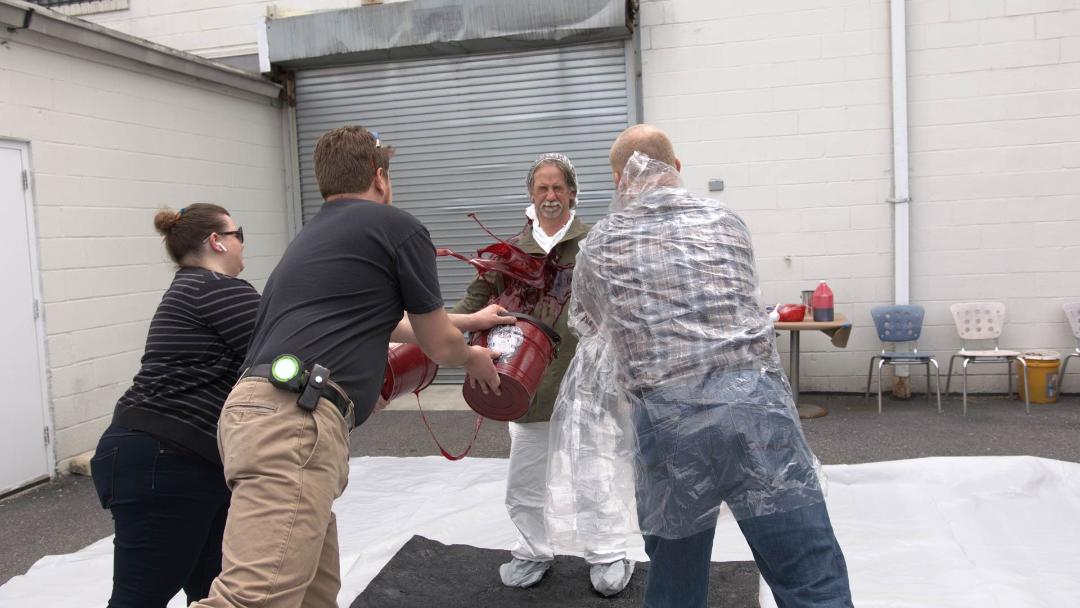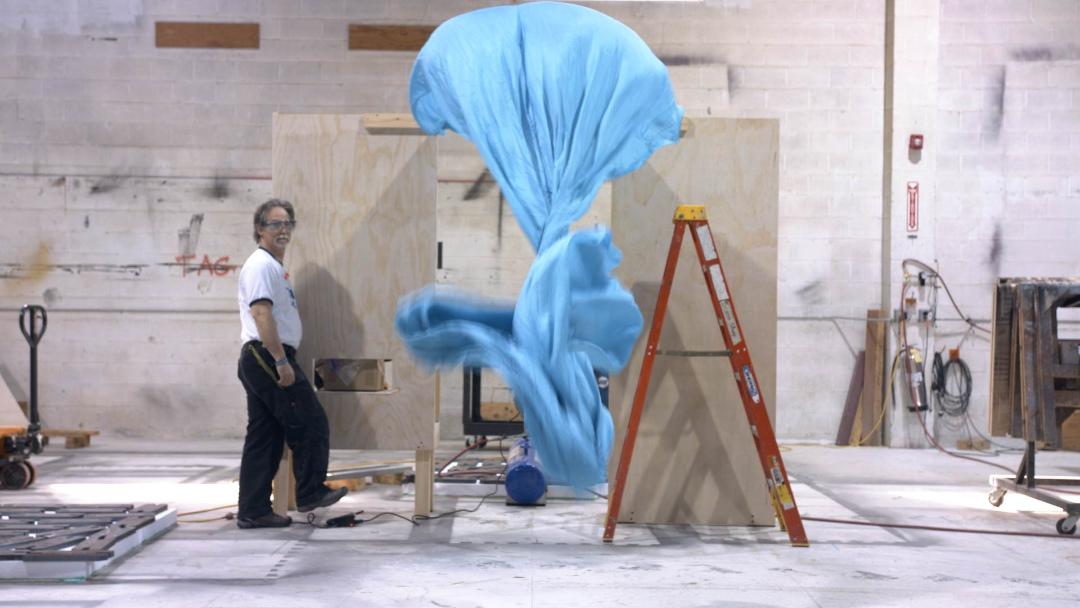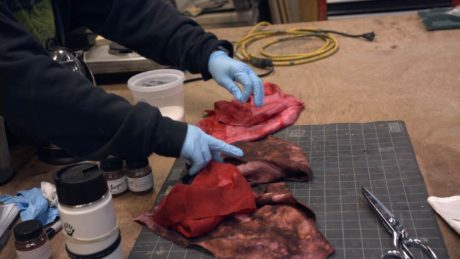Staging an epic that involves a bloody chain of events in “a deluge of violence,” as the Shakespeare Theatre Company describes The Oresteia, requires not just the skills and talents of the actors on stage and the boldface names of the creative team. It also demands the talents of those usually unobserved–those who work deep backstage.

In his final directorial venture at the helm of the Shakespeare Theatre Company, Michael Kahn is bringing the Greek epic, The Oresteia, to Sidney Harman Hall. It is an intense tale of grief and rage in the aftermath of war, with the murder of Agamemnon by Clytemnestra, the murder of Clytemnestra by Orestes, and the mayhem and soul-searching that follows. The play is penned by Ellen McLaughlin, who freely adapted from Aeschylus. As McLaughlin notes in STC marketing material, “how do we respond to a volatile world, to the crises we find ourselves living through?”
The STC production of The Oresteia provides an opportunity to dive into the often unheralded responsibilities of the props designers. After all, there are expectations that there will be “blood” of some kind in the production, given the number of deaths depicted.
So, what is it that a props designer does for a production such as The Oresteia?

To answer that question, I headed off to the STC props shop for a tour and to learn. The props shop is housed in a large warehouse-like building off the beaten track in NE Washington. Once at the props shop, Chris Young, the STC Properties Director, and Becky Williams, STC Soft Goods Artisan, schooled me in what they do to bring audiences shivers. Young has been with STC for nearly 30 years.
During my props shop visit, Young and Williams chatted about aspects of props in general and for The Oresteia specifically. For any STC production, props fabrication is evolutionary and takes experimentation. The props shop has much to consider, such as being aware of actors’ possible allergies to fabrics or what is the base of a particular theatrical blood effect (i.e. petroleum oil, vegetable oil, water). Or for a large venue such as Harman Hall, how might a prop “look” to those in the front rows compared to those in the rear rows? How might fabric drape given its weight or weave? Can the fabric take to dye and what happens to it when dyed? (Williams was wonderful to show me in real life). How a fabric might billow must be taken into account through constant experiment. I learned that props are evolutionary–they are not just done once and that’s it.

David Siegel: How would you describe what “props design” is in a live theater production?
Chris Young: A “prop” is defined as something that supports, and I make the objects that an actor wants to use on stage. I believe props design is finding the correct elements that elegantly support the storytelling in a production. Props are there to help the audience to see, feel, and understand the story.
What have been some of your fond memories of developing props for STC productions?
One of the first with STC was working with Avery Brooks during the 1990 Othello. We needed to work out where we could hide weapons on his body. We needed to see how big a blade we could hide on his wrist and forearm. Mr. Brooks agreed to let me come take measurements during one of the breaks during the rehearsal day. I spent 15 minutes measuring, tracing, and manipulating his arm and wrist to come up with some ideas. He pretty much ignored me, as if this happens all the time until the break was over. He turned to me and asked, “Do you think you have something?” I still had hold of his wrist. I said, “I think so….and would you mind?” I turned his hand so I could put my palm over his. His hand is at least a third bigger than mine, and he curled his fingers over the top of mine and we both laughed about that. We did come up with a bracer he wore that concealed his suicide knife.
What have been some of the greatest challenges in developing props for STC productions?
Right now, as the Props Director, the biggest challenge is how we allocate our resources as we move through rehearsals, technical rehearsals, opening, and running the show. Props has to keep up with rehearsal changes while supporting the designers’ priorities and keeping a reserve for changes and adds that will come out of the technical rehearsals. It’s a moving goal that you hope to achieve without going over budget or burning out your staff.

For The Oresteia, what would you like audiences to immediately “feel” as they see the production and take in your props designs before their eyes?
For The Oresteia, our largest projects support some key moments in the show. We’re hoping that the audience has a visceral response to the entire production. And that what they see enhances the environment and makes real and vivid the place where the story occurs.
For The Oresteia, what would you like audiences to think to themselves in one or two words about your props design after the final curtain?
Amazing fabric!
Overall, it was a revelatory visit learning about the fabrication of dramatic elements that Young, Williams and the STC props crew create–creations that add emotional heft to The Oresteia. Young noted that the final props the audience will see aim to “honor the plot and language” of The Oresteia–a production about the fragility of society.
The Oresteia plays from April 30-June 2, 2019, at the Shakespeare Theatre Company’s Sidney Harman Hall, 610 F Street NW, in Washington, DC. For tickets, call the box office at (202) 547-1122 or go online.




